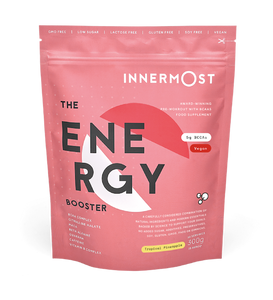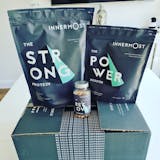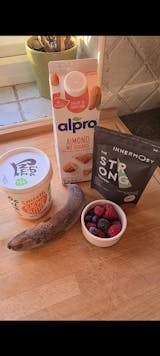The latest trend in the fitness community is bringing in mixed reviews and opinions. But, whether it’s a fad or not, as voices for the fitness community, here at Innermost we felt it was our duty to investigate. So, whether you’ve heard of this hit new trend or not, we’re here to give you the 4-1-1 on Exergaming.
What is Exergaming?
In short, Exergaming is exercise that is fuelled (or instructed) by technology, namely video games.
Being cited as the “future of fitness” by the American College of Sports Medicine, Exergaming is the term coined that is referring to the growing trend of exercise-based video games (which are growing in popularity largely due to the rise in AR development), Exergaming involves game consoles such as the Nintendo Wii, Nintendo Switch, and fitness games for PS4 such as Just Dance (an absolute classic).
A history of Exergaming
Whilst this isn’t the kind of origin story and historical timeline that dates back hundreds of years, the origins of Exergaming are actually pretty interesting.
Developed in the late 1980s, Exergaming first became popular alongside the rise in popularity of video games, with notable examples including games such as Virtual Racquetball. Sounds pretty sophisticated, right?
Your first memories of exercise-inspired video games are probably those of the Nintendo Power Pad, DanceDance Revolution and those snazzy, foldable dance mats (depending on your age, of course). Now, exergaming has become a hot topic, and the video games on offer are sophisticated, effective and growing in popularity by the minute. But what are the benefits of this at-home exercise method?
What are the benefits of Exergaming?
Gone is the notion that video games are bad for our health. Especially now VR is getting involved. But more on that later…
Aside from being a great alternative to gym-based or team-based exercise for individuals who are perhaps too shy to exercise in public, Exergaming brings a host of benefits to the fitness community, including the below:
- Educational, interactive and engaging
- Allows for multi-player participation
- Enables players to connect from all over the globe
- Allows for at home exercise
- Improves hand-eye coordination
- Decreases stress levels
- Suitable for all ages and abilities
- Provides a fun, aerobic workout
- Improves cardiovascular health
- Adds an element of fun to exercise
Is Exergaming the future of fitness?
Now, this is an interesting question, for sure. One of the best things about fitness, exercise and getting in shape is the vast variety of exercise techniques in which to do so, and here at Innermost, you know we’re big fans of making exercise enjoyable. For that reason, we’re all for Exergaming.
But is it really the future of the fitness industry? The progress and evolution of Virtual Reality (or, VR for short) could suggest that the answer to this one is yes. And whilst it may be true that you can never beat a good old fashioned walk outside, evening jog around the park or a dip in the sea as part of your exercise routine, it might be time to come to terms with the fact that online exercise techniques such as Exergaming are going to become the norm. Gamercising, if you will.
Virtual reality and fitness: a perfect match
In order to determine the suitability of pairing virtual reality software with exercise, investigations into the style, efficiency and success of such a pairing are becoming increasingly common. These studies all aim to answer the burning question: is virtual reality the future? A question that is much bigger than the fitness industry alone, for sure.
One of these investigations, namely a study conducted by Psychology of Sports and Exercise, analysed eighty participants: forty men and forty women, to discover whether use of virtual reality fitness techniques, or Gamercising, had a positive impact on the participants’ overall fitness levels. Amazingly, the study overwhelmingly revealed that Gamercising through the use of VR technologies led to great increases in the fitness levels of the participants, whilst simultaneously reducing exercise-induced injury and pain at the same time. Neat, right?
Our recommended fitness games for Exergaming
So, the results are in. Gamercising really is effective. It’s definitely worth giving it a go with those results, that’s for sure.
When it comes to getting started with a new hobby or fitness regime, recommendations are always welcome, right? We’ve done the research so that you don’t have to.
Trained in years of exercises, we’ve widdled down our fun-filled and beneficial favourites to get you going on your Exergaming journey…
- Wii Sports
- Just Dance
- Ring Fit Adventure
- Xbox Kinect
- DanceDance Revolution (yes, it’s still going strong!)
























